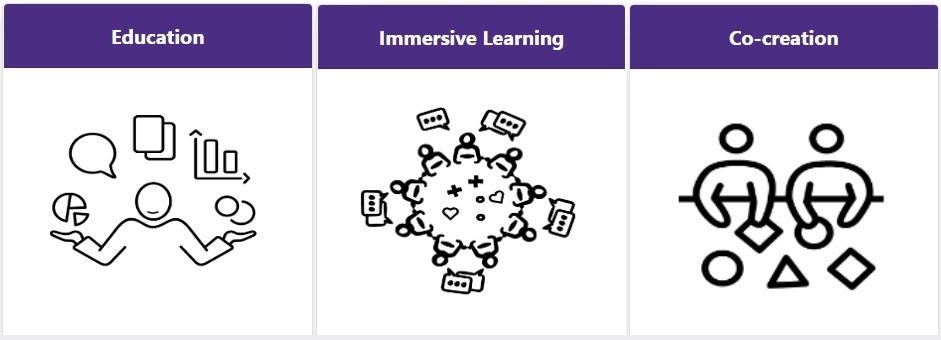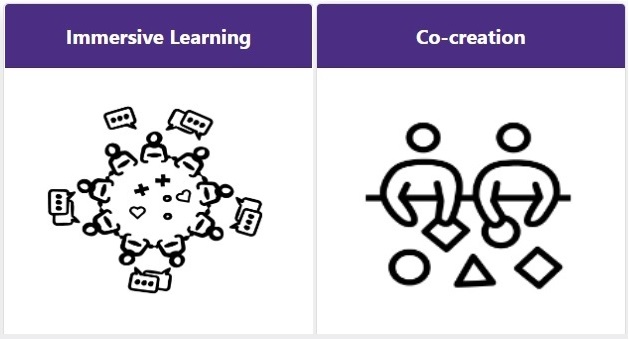By: Scott Henderson and Louisa Gaylord
The eScience Institute hosts a variety of hackweeks every year, which are designed to immerse participants in collaborative project work around a specific topic. Hackweeks try to blend elements of a hackathon, where participants work collaboratively in project teams, with tutorials on a variety of data science topics in an immersive and inclusive environment. eScience hackweeks provide a deep dive into an area of science with a focus on how data science methods and tools can be utilized to further research. For each hackweek, the program format evolves and is modified and adjusted to best suit the problem space and the user community. A great example of this process is the ICESat-2 Hackweek, which wrapped up earlier this year.
The ICESat-2 Hackweek began in June 2019, when eScience partnered with NASA to host a program for nearly 100 geoscientists to explore the newly-available public data from NASA’s Ice, Cloud, and Land Elevation Satellite-2 (ICESat-2) satellite that had launched the previous year. The ICESat-2 satellite is a state-of-the art laser altimeter that provides global measurements which help determine how much the cryosphere is changing in a warming climate. ICESat-2 produces huge datasets that take time and expertise to unravel, which aligns perfectly with eScience’s mission to “empower researchers and students in all fields to answer fundamental questions through the use of large, complex, and noisy data.” The inaugural ICESat-2 Hackweek was a huge success, rallying a community around open source software, and creating new software tools to meet the specific needs of the scientific community.

NASA’s latest generation of satellites like ICESat-2 are generating novel datasets that need new approaches, tools and techniques for effective analysis. Seeing the value in repeat events to reach a broader community and continue pioneering novel analysis of the ever-growing ICESat-2 archive, eScience and NASA have hosted a total of three such hackweeks over the past 4 years. The program length has doubled from five days to ten, and pivoted to a fully virtual format in 2020 due to the global pandemic. Each year, this event continues to be a powerful way to connect people across the globe and create valuable public educational content. Previous participants have begun to return and are stepping into organizational leadership roles to help shape the future of hackweeks at eScience.
This year, project teams tackled myriad topics like characterizing persistent polynyas in Antarctica, combining synthetic aperture radar and ICESat-2 elevations to measure iceberg dimensions, identifying coastal morphology and bathymetry, and measuring ice discharge of glaciers. In addition, participants gained valuable experience in both using and contributing to open source software in pursuit of scientific discovery. “In only a week, I learned about how the data are gathered, the different levels of processing, and the tools used by the community for data selection, download, and visualization,” said 2022 participant Loïc Bachelot.
The 2022 ICESat-2 Hackweek also incorporated new technological innovations and partnerships, including working with The International Interactive Computing Collaboration (2i2c) to utilize open-source JupyterHub research environments that run on cloud infrastructure. JupyterHub distributions can be tailored for research and education, and have applications far beyond NASA satellite data and eScience hackweeks. For this particular event, it was important to have a JupyterHub running in the Amazon Web Services us-west-2 datacenter, where NASA is hosting the ICESat-2 archive, in order to have low-latency data access for computations. Cloud computing costs were covered by credits through the Amazon Data Sustainability Initiative.

After each hackweek concludes, participants fill out a survey and provide event organizers with feedback and testimonials in order to constantly improve the program’s organization and approach. The program requires months of preparation, involving planning calls with community leaders who help shape the event and craft tutorials showcasing how data can be analyzed with the latest open source software. “We at eScience have invested a lot of time refining our hackweek model,” said Data Science Fellow and eScience Research Scientist Scott Henderson. “We developed a hackweek guidebook that codifies organizational roles, details recommendations for effective tutorial design, and points to examples from many past events.”
A major goal of the hackweek model is to streamline our own internal processes, while documenting everything publicly so that motivated folks could organize their own event independently. The measurements from NASA’s ICESat-2 satellite can be replaced with datasets on other topics like oceanography, neuroscience, and astronomy to create entirely new hackweeks that utilize the same underlying program template. All of the revisions and lessons learned from the ICESat-2 Hackweek over the years have been compiled on a single website, which includes links to projects, tutorials, and YouTube recordings. “We think it is important to put into practice what we teach about open science, by sharing all of our organizational tools online. When other organizations use these tools and refine them, everyone benefits,” said Senior Data Science Fellow and eScience Research Scientist Anthony Arendt.
If you are interested in working with the eScience Institute to develop participant-driven workshops that blend data science education, community building, and project work, you can learn more on our hackweek website.

